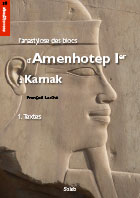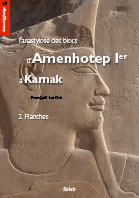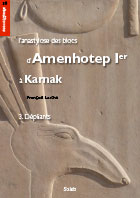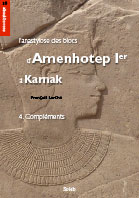Οὐκ ἐπ᾿ ἄρτῳ μόνῳ ζήσεται ἄνθρωπος, ἀλλ᾿ ἐπὶ παντὶ ῥήματι ἐκπορευομένῳ διὰ στόματος θεοῦ
'Not on bread alone shall man live, but on every word proceeding from the mouth of God' - Deut. 8.3/Matt. 4.4
Ὁμιλία, ἀναστροφή, τριβὴ καθημερινὴ ὀφείλει δοθῆναι πᾶσιν τοῖς παισίν, τοῖς μικροῖς καὶ τοῖς μείζοσιν, ἐπειδὴ ἀναγκαῖά εἰσιν.
'Speech, conversation, everyday usage ought to be given to all boys, [both] younger and older, since they are necessary.' - Colloquia Monacensia-Einsidlensia 3b (translation from Dickey 2012)
The foundational principles upon which this website is founded are summarized nicely in these two quotations, one from the holy scriptures and the other from a conversational handbook composed during the Roman period. Simply put, understanding the scriptures is of utmost importance. Accordingly, when learning the ancient languages in which they were written, we benefit most by immersing ourselves in authentic forms of the ancient language as an ancient language learner would have done.
While this website is indeed focused on Koine Greek in general, there is a special focus on the Greek scriptures, namely, the New Testament and the Greek Septuagint. Accordingly, this website exists to provide students of Koine Greek—we will always be students of Koine Greek, even if we are teachers—with audio/visual resources for the New Testament, the Greek Septuagint, and other Greek texts from the same period in the koine pronunciation, such as:
Audio Greek New Testament
Koine Greek Audio Recordings (non-Biblical Texts)
Koine Greek Videos (Biblical and non-Biblical Texts)
Resources on Historical Koine Greek Phonology and the Pronunciation of Koine Greek
Koine Greek Lexicon: English to Koine Greek Lexicon / Dictionary
Additionally, I will generally try to provide a bit of background about the original setting of a given genre of extra-biblical Koine material and the current state of scholarship via blog posts.
This endeavor rests on the foundational conviction that one cannot really learn a language unless they can hear it, speak it, and see it in action in addition to reading and writing it. Moreover, being able to interact with a language by speaking and hearing it is necessary to arrive at the highest possible proficiency in reading.
The utmost purpose of all of this, of course, is to know the scriptures and the Word of God. In Colossians, we read, καὶ πᾶν ὅ τι ἐὰν ποιῆτε, ἐκ ψυχῆς ἐργάζεσθε, ὡς τῷ κυρίῳ καὶ οὐκ ἀνθρώποις "and whatever you do, do it with all your heart, as unto the Lord and not unto men" (Col. 3:23). If we want to learn Greek to know the scriptures, we ought to do it with all our heart.
This is my contribution, by the grace of God, to help others to grow in their understanding of Greek and the scriptures.

















